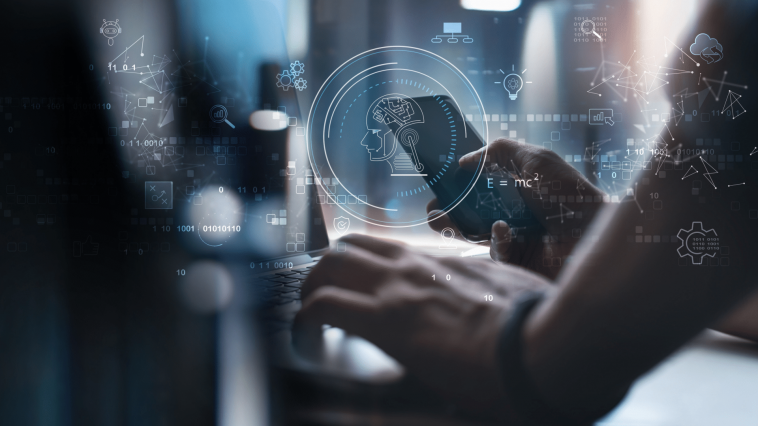When responding to questions on AI changing people in sure roles, most “specialists” declare that AI will substitute some jobs however can be a way more helpful device for augmenting human intelligence and skill. What if they’re incorrect?
In the entire hype related to this newest know-how wave, a big pattern is going on throughout industries that would considerably change the impression of AI — the retirement of the data employee.
We’d like not look additional than the final wave of clever know-how — the “Web of Issues” (IoT) to see the impression.
What previous waves of clever know-how inform us
The time period “Web of Issues” was coined in 1999 by pc scientist Kevin Ashton. Whereas working at Procter & Gamble, Ashton proposed placing radio-frequency identification (RFID) chips on merchandise to trace them by a provide chain.
“Machines speaking to machines” began rolling out in early to mid-2010, making their approach into manufacturing, precision agriculture, complicated data networks and for customers in a brand new wave of wearables.
Now, having a few decade of expertise in how IoT has impacted sure industries and markets, maybe it may give us some attention-grabbing insights into the way forward for AI.
Cisco launched the “Tomorrow Begins Right here” IoT marketing campaign in 2010, at a time when communication networks had been transitioning from {hardware} “stacks” to software program growth networks (SDN).
The change meant that for carriers to broaden their bandwidth, they not wanted to “rip and substitute” {hardware}. They solely wanted to improve the software program. This transition started the period of machines monitoring their efficiency and speaking with one another, with the promise of sooner or later producing self-healing networks.
Over this identical interval, community engineers who ushered within the transition from analog to digital started retiring. These skilled data staff are sometimes changed by technicians who perceive the monitoring instruments however not essentially how the community works.
Networks have grown in complexity during the last dozen years to incorporate mobile, with the variety of connections rising exponentially. To assist handle this complexity, quite a few monitoring instruments have been developed and applied.
The individuals on the opposite finish studying the alerts see the plain however have issue decoding the problem or what to prioritize. The explanation? The device is aware of there is a matter however is just not sensible sufficient but to know the way to repair it or if it’s going to maintain itself. Technicians find yourself chasing “ghost tickets,” alerts which have resolved themselves, leading to misplaced productiveness.
The identical factor is repeating itself in advertising at the moment. As one CMO instructed me, “I can discover individuals who know the applied sciences all day lengthy, however what I can’t discover is somebody who thinks strategically. Ask a advertising supervisor to arrange the instruments and run a marketing campaign and so they haven’t any downside, however ask them to write down a compelling worth proposition or supply for the marketing campaign and they’re going to battle.”
It’s straightforward to get sucked into the instruments. AI mills are actually intriguing and might do some wonderful issues. However primarily based on what we now have seen, the instruments should not sensible sufficient to completely ship on their promise… but.
Dig deeper: Mitigating the dangers of generative AI by placing a human within the loop
The dangers of over-relying on AI
Right here’s the warning from IoT — as instruments grow to be extra educated, the workforce working them is lowering. It’s leaving a data hole. As that data is transferred from employee to machine, we should ask ourselves what we’ll be left with. Will our staff have sufficient expertise and experience to know if what comes out of the machine is correct, factitious and even harmful?
In a current WSJ article, an oncology nurse, Melissa Beebe commented on how she depends on her remark abilities to make life-or-death selections. When an alert mentioned her affected person within the UC Davis Medical Heart oncology unit had sepsis, she was certain the AI device monitoring the affected person was incorrect.
“I’ve been working with most cancers sufferers for 15 years so I do know a septic affected person after I see one,” she mentioned. “I knew this affected person wasn’t septic.”
The alert correlates elevated white blood cell depend with septic an infection. It didn’t take note of that this explicit affected person had leukemia, which might trigger related blood counts. The algorithm, which was primarily based on synthetic intelligence, triggers the alert when it detects patterns that match earlier sufferers with sepsis.
Sadly, hospital guidelines require nurses to comply with protocols when a affected person is flagged for sepsis. Beebe may override the AI mannequin if she will get a physician’s approval however faces disciplinary motion if she’s incorrect. It’s straightforward to see the hazard of eradicating human intelligence on this case. It additionally illustrates the chance related to over-relying on synthetic intelligence.
Enterprise intelligence and human intelligence are key to success
AI will free us from low-value duties — which is nice. However we have to redistribute that point to develop our individuals and our groups higher. The best profit from these game-changing applied sciences within the business-to-business setting can be realized once we mix equal quantities of human intelligence with machine intelligence.
Get MarTech! Every day. Free. In your inbox.
Opinions expressed on this article are these of the visitor creator and never essentially MarTech. Employees authors are listed right here.

